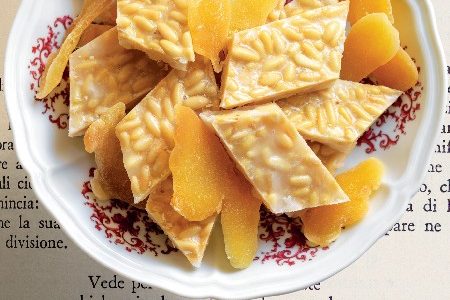Dine with Dante (and his Stilnovist friends) to celebrate his 700th anniversary, satisfying the appetite for culinary whims and curiosities on the table of the Middle Ages
Tells Giovanni Boccaccio, author of Decameron as well as the first biographer of Dante, that mother Bella dreamed of giving birth to the great poet near a crystalline stream of water, of seeing him feeding on laurel berries and turning into a magnificent peacock before her eyes. The laurel / peacock symbolism that Boccaccio wants to connect to the wreath with which the best were crowned could sound very irreverent, from a culinary point of view: because the laurel, as well as rewarding the winners of the certami, flavored the roasts and the noble peacock it often ended up properly cooked on the desks and then in the stomachs of Dante's contemporaries, together with cranes, turtles, eels and even… crickets!
We are witnessed by one of the very first recipe books in history, that Liber de Coquina fruit of the cultural fervor of the Angevin court of Charles II. So let's try to sit together at Dante's table in his family home in Porta San Piero, before exile takes him away from Florence forever, to have a nice dinner prepared under the supervision of his wife, monna Gemma Donati, imagining that there are friends with him, all writers and poets: perhaps the disdainful Guido Cavalcanti, his teacher ser Brunetto Latini, the notary Lapo Gianni, and also his cousin in law Bicci Donati, notoriously good food, so much so that Dante will put him in the Purgatory of greedy.
Let's imagine a meal without too many frills, in a context of friendly sharing. After all, Dante was the first to make knowledge "a banquet to be shared" in Convivio and he has peppered his writings with metaphors related to food. Starting from having to eat that other people's bread that so "tastes of salt", granted to the "undeserved exile" almost out of charity, while in Florence, since the rivalries with Pisa made it difficult to supply salt, they were used to eating it silly, that is, unsalted. Bon appetit then with Dante and his poet friends, to remember him as a real man, in his human and family dimension and in his terrible and magnificent time.
5 curiosities from Dante's table
1) Old fashioned seasoning
Lasagna, macaroni and "ravioli" in Dante's time were served with butter, cheese, spices and… sugar! The tomato was not there yet. It was then a descendant of Guido Cavalcanti, Ippolito, who wrote one of the first recipes for macaroni with sauce in the nineteenth century.
2) Colored and digestive
Sauces were very popular in the Middle Ages both for their flavor, which had to help flavor the Florentine bland bread and favor the first digestion of meat and fish, and for the contrasting colors (white, green and brown for the camelina made from cinnamon and cloves), which ended up making it a decorative element on the canteens.
3) Fruit, a real aperitif
While the servants finished assembling the canteens, that is the wooden shelves supported by trestles which, covered with tablecloths, would then host the guests, the guests were served fruit and sweet wine, as snacks to "open the stomach" and make them hungry. …
4) Zero kilometer
Dante owned agricultural land just outside Florence and could put his farmers' fruit and vegetables on his table. And also the "forest" mushrooms, with regard to which even then great attention was paid in recognizing the edible ones from the dangerous ones.
5) Cooked in the jar
The "implenda", that is, stuffed hen, was prepared like this: its skin was stuffed into an elongated earthenware pot with an opening wide enough to insert the stuffing. The closed container was left to boil in a bain-marie. When it was time to bring it to the table, the vase had to be broken!
